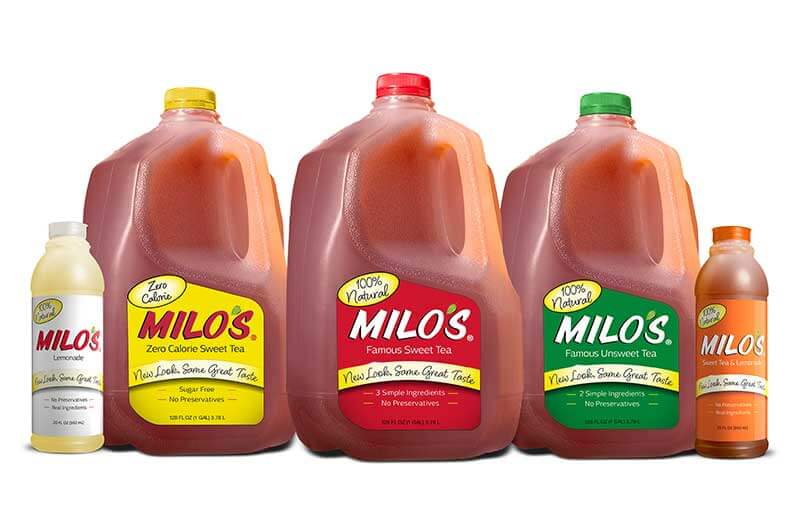Milo’s Tea Co., maker of the best-selling tea item in the U.S., has unveiled a new look with an updated label on its packaging. The Birmingham, Alabama-based company says its new label reflects the heritage of the brand and highlights what is important to today’s consumers.
Milo’s says the new packaging reinforces founder Milo Carlton’s philosophy: use high-quality, natural ingredients; listen to customers; and never sacrifice taste. The new packaging reminds consumers of its simple ingredient list and calls attention to what’s not in its beverages: no preservatives and no added colors.
When updating the packaging, Milo’s invested in quantitative and qualitative consumer research, including in-store intercepts. Milo’s also used packaging research technologies, like visual attention analysis, to develop the final label design.
The company says the result is a new label based entirely on the iced tea consumer. The label features iconography and messaging communicating to shoppers the qualities unique to Milo’s products. Milo’s says that some of the qualities the research found to be most important to consumers are: its beverages are brewed with real tea leaves, are made in the USA and taste just like homemade.
Along with the new-look front label, Milo’s has added a new back label on its gallon and half-gallon products that tell the Milo’s story and illustrate the brand’s difference. The enlarged back label has allowed Milo’s to include icons that the company says set the brand apart: Certified Women-Owned Business, Zero-Waste certified, BPA-Free containers and a 1 Percent Profit Pledge, indicating that Milo’s donates 1 percent of its annual profits.
“We are excited to debut Milo’s new packaging,” said Tricia Wallwork, Milo’s CEO and founder Milo Carlton’s granddaughter. “Our updated labels were designed with the consumer in mind, highlighting important product attributes and empowering consumers to make better, more informed choices.”

